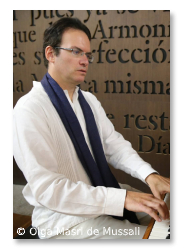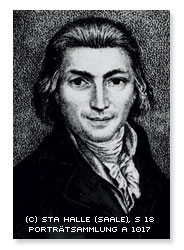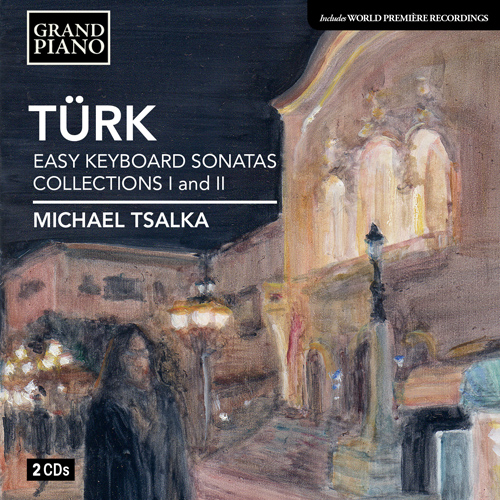TÜRK, D.G.: Easy Keyboard Sonatas, Collections 1 and 2 (1783) (Tsalka)
Daniel Gottlob Türk is best known for his influential teaching manual Klavierschule (1789), a work which influenced a generation of aspiring keyboard players. In order to advance the technical and musical skills of students, in 1783 Türk published two collections of light or easy keyboard sonatas (Leichte Klaviersonaten). Listeners, performers, teachers, and musicologists will discover untapped riches in these expressive and historically important works, played on this recording on four contrasting historical keyboards.
This recording was made on period instruments:
CD1, Sonata No. 2: CD2, Sinfonia No. 2, Sonata No. 3 and Sinfonia No. 6: Johan Andreas Stein Grand Piano (1784);
CD1, Sonata No. 4; CD2, Sonata No. 5: Stein Upright Grand Piano (1820)
CD1, Sonatas Nos. 3 and 5; CD2, Sonata No. 4: Sodi Grand Piano (1785);
CD1, Sonatas Nos. 1 and 6; CD2, Sonata No. 2: Shudi and Broadwood Harpsichord (1781)
Tracklist

Pianist and Early Keyboard performer Michael Tsalka has won numerous prizes in Europe, the United States, the Middle East, Asia and Latin America. A versatile musician, he performs repertoire from the early Baroque to the present day with equal virtuosity.
He obtained a Bachelor’s degree from Tel Aviv University and continued his studies in Germany and Italy. From 2002 to 2008 he studied at Temple University under the guidance of Joyce Lindorff, Lambert Orkis and Harvey Wedeen. Tsalka holds three degrees from that institution: Master’s degrees in both chamber music and harpsichord performance, and a Doctorate in piano performance. Other mentors include Dario di Rosa, Malcolm Bilson, David Shemer, Charles Rosen and Sandra Mangsen.
Michael Tsalka maintains a busy concert schedule with recent performance highlights including Zhonghe Hall in the Forbidden City, Beijing, Palacio de Bellas Artes Theatre in Mexico City, The Royal Concertgebouw, Amsterdam, the Hermitage Museum in St Petersburg, The Metropolitan Museum in New York, the Mozarteum in Salzburg, Kunsthistorisches Museum in Vienna, the Elbphilharmonie in Hamburg and Sydney Conservatorium of Music.
He has held teaching posts at the National Centre for the Arts (CENART) in Mexico City and the Lilla Akademien in Stockholm, and was an artist in residence at the Nelson Centre of Musical Arts (NCMA) in New Zealand (2020). He is currently head of the keyboard department at the Vanke Meisha Arts Academy (VMAA) in Shenzhen, China. He has presented over 130 masterclasses across all continents, and has been the artistic director of festivals in China, Sweden, Spain, the Netherlands and Finland. Together with Dr Angélica Minero Escobar, he is completing a critical edition of Daniel Gottlob Türk’s keyboard sonatas for Artaria Editions.
For more information, visit www.michaeltsalka.com.
Watch Michael Tsalka play Daniel Gottlob Türk’s Grave e sostenuto [Grand Piano GP629–30 | CD 2, Track 8]

Today, Türk remains best known for his extensive and extremely detailed musical treatise, Klavierschule (1789), one of the most important sources for keyboard performance practice of the late 18th century. He is also well-known among piano teachers as the composer of a collection of useful keyboard miniatures, the Kleine Handstücke für angehende Klavierspieler, which systematically prepare beginning students for the many challenges of more advanced repertoire.
Türk’s musical training, which he received as a teenager in Dresden from Gottfried August Homilius, a former student of Johann Sebastian Bach, thoroughly prepared him for the varied musical rôles, which he had to adopt throughout his professional life. When he became a student at the University of Leipzig in the early 1770s, the keyboard virtuoso, Johann Wilhelm Hässler, introduced him to Emmanuel Bach’s Versuch über die wahre Art das Klavier zu spielen (1753) and also to his keyboard sonatas. Shortly afterwards, Türk, under the supervision of his mentor and friend Johann Adam Hiller, began to compose his first two collections of sonatas.































